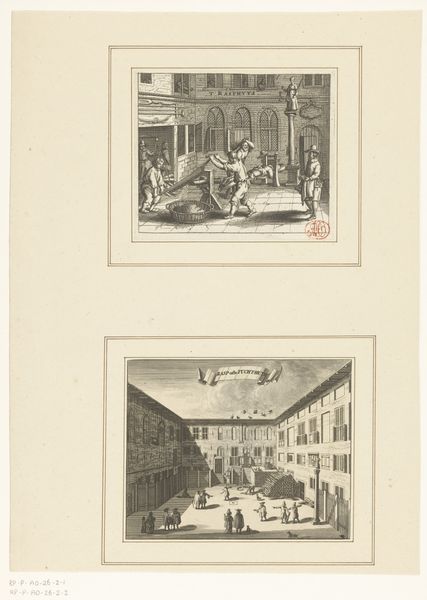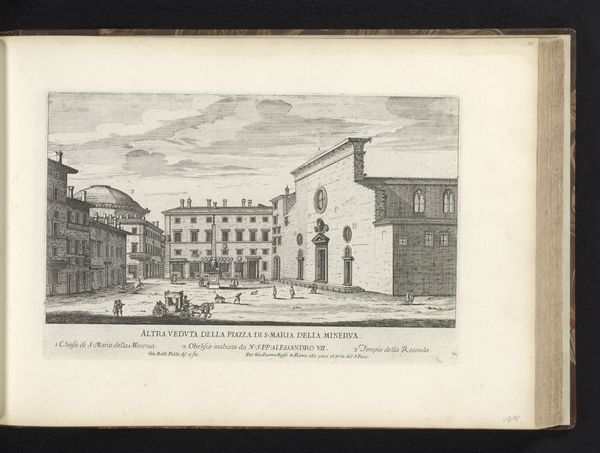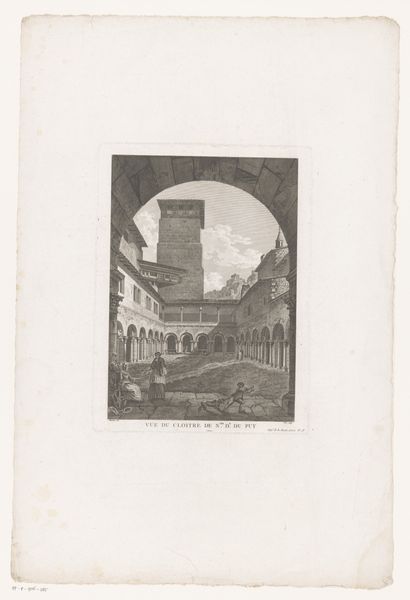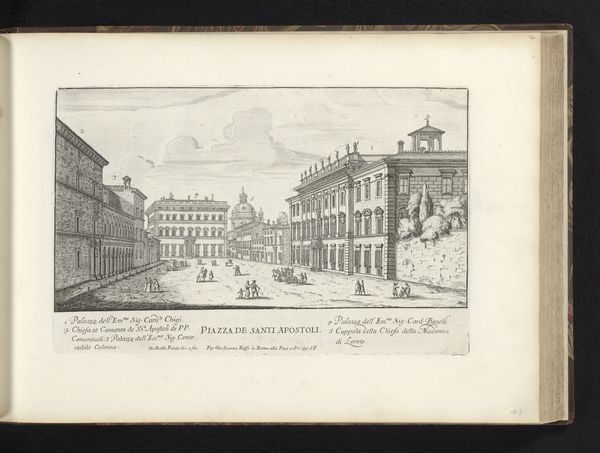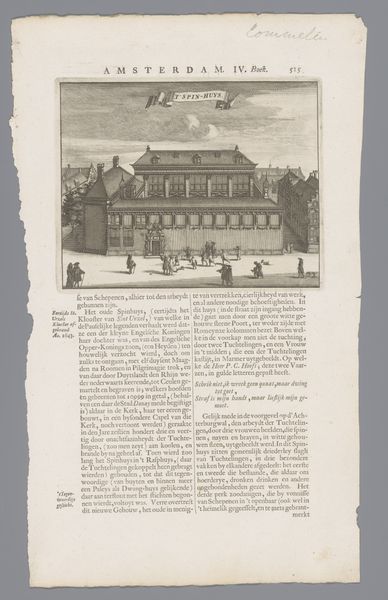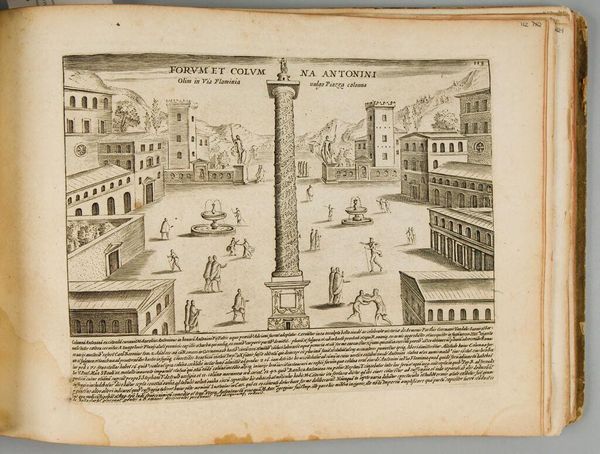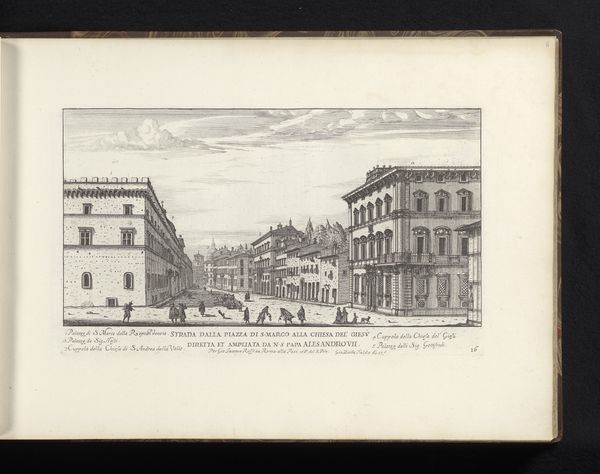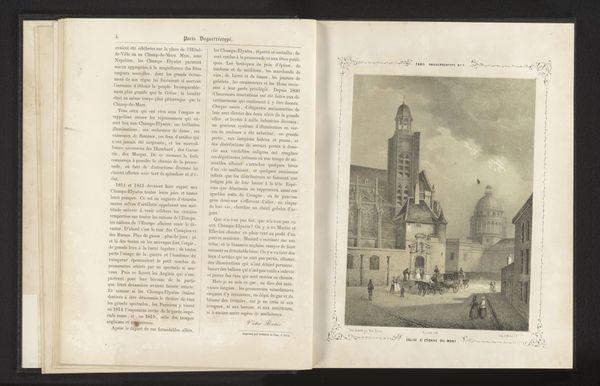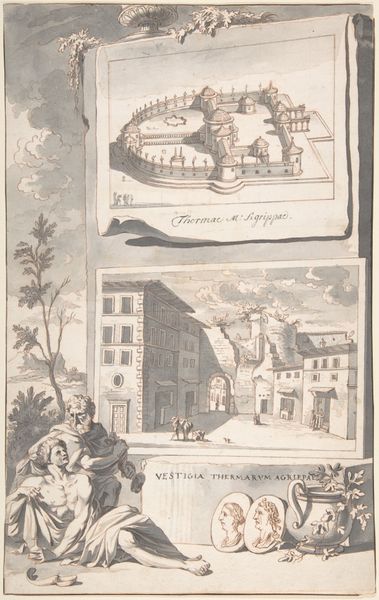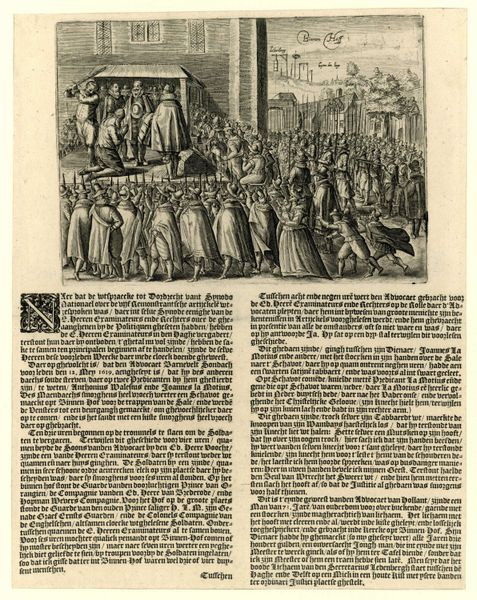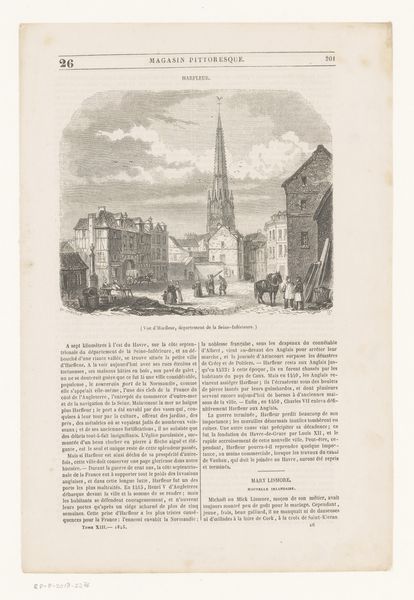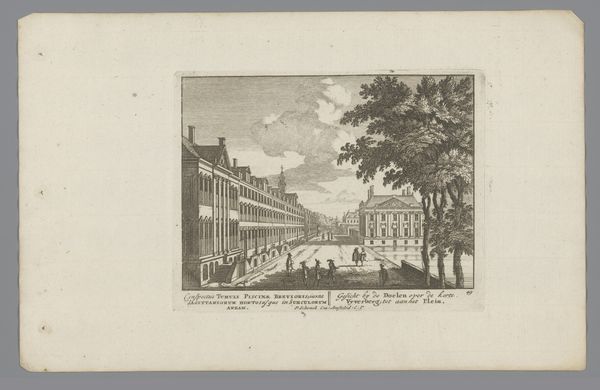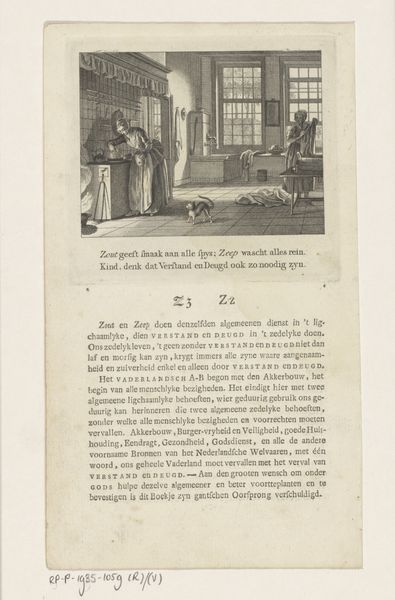
print, engraving
#
dutch-golden-age
# print
#
cityscape
#
genre-painting
#
engraving
Dimensions: height 125 mm, width 157 mm
Copyright: Rijks Museum: Open Domain
Editor: Here we have "View of the Courtyard of the Rasphuis in Amsterdam," a print made around 1693 by an anonymous artist. Looking at the figures, there’s something almost unsettling about this domestic scene within the walls of what I know was a house of correction. What do you see in this piece? Curator: From a materialist perspective, I'm immediately drawn to the labour inherent in the very production of this image. Think of the engraver meticulously carving the lines into the plate, a process mirroring, perhaps, the repetitive, disciplined labor expected of the Rasphuis inmates. Editor: Interesting! It's almost as if the print itself is participating in that disciplinary system. Curator: Precisely! The print medium also enabled mass consumption, allowing the public to view and internalize the ideals of order and justice. What were the social structures that made the Rasphuis and depictions of it not just common but desired? What role did the raw materials of paper, ink, and metal play in constructing those narratives? Editor: So you're saying the act of creating and distributing the image is inseparable from the themes it represents? Curator: Exactly. We must consider not just the *what* but the *how* and *why*. The print becomes a commodity circulated within a system, just as the inmates' labor was commodified within the walls of the Rasphuis. Look at that text beside the image. What might that mean to the audience it addressed? How would their consumption impact the world? Editor: I never considered that the physical creation of art had so much to say about its message! It really gives a different context to "View of the Courtyard of the Rasphuis in Amsterdam," and sheds new light on our understanding of its artistic and historical impact. Thanks! Curator: You’re welcome. Remember, art isn't just a pretty picture – it's a product of labor, materials, and a very specific societal moment.
Comments
No comments
Be the first to comment and join the conversation on the ultimate creative platform.
